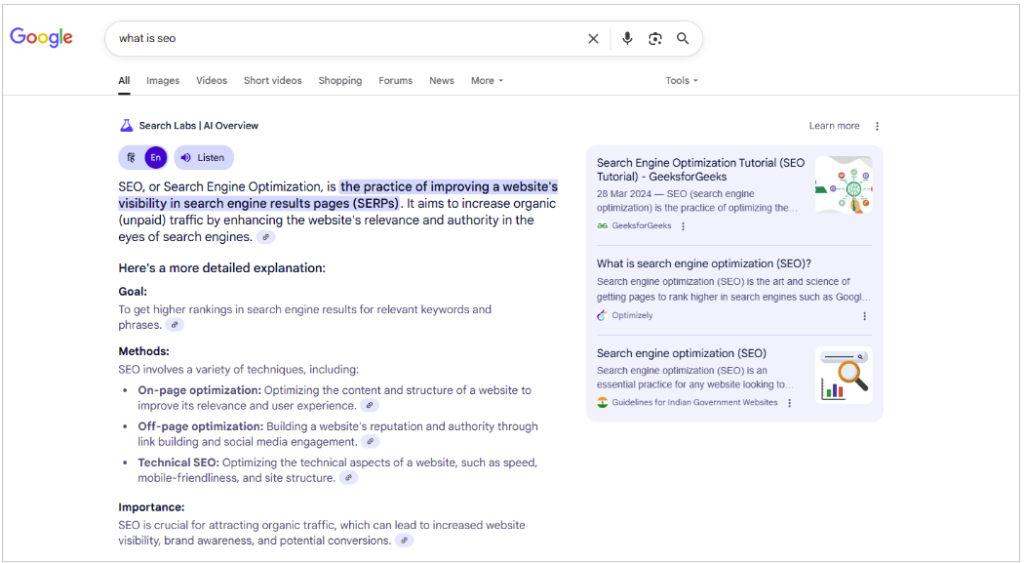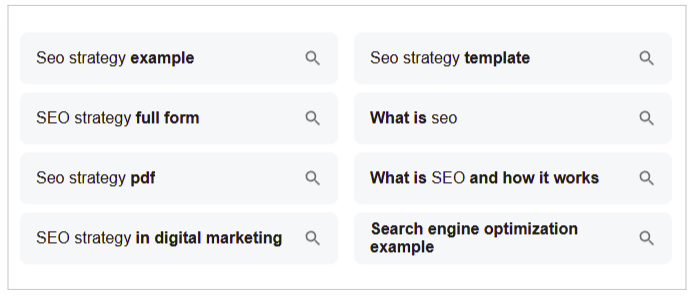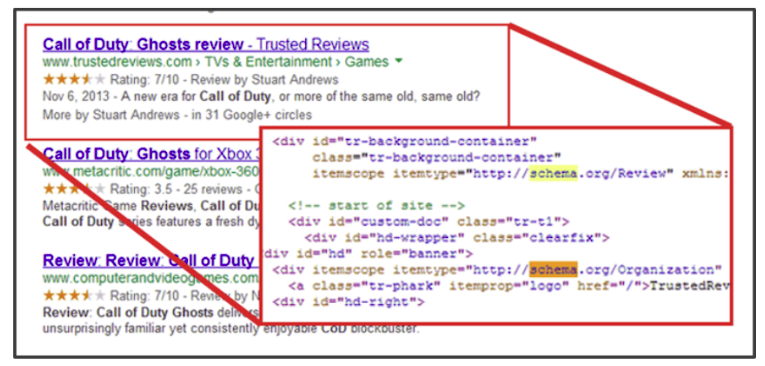Do your rankings barely move despite publishing well researched, technically sound, and value-driven content while also applying all the SEO tactics you know of? If yes, you’re not alone. I have spotted this issue countless times over the past few years.
The reason? Google’s criteria for ranking content has significantly evolved. Therefore, producing good content is no longer enough to rank well. Instead, Google prefers content that demonstrates Experience, Expertise, Authoritativeness, and Trustworthiness – something we know as Google’s E-E-A-T signals.
While talking about E-E-A-T signals is easy, establishing it in your content is where the real challenge lies; it’s a challenge that requires experience and expertise.
The advanced keyword optimization techniques I am sharing here are not something I have read about. Instead, I’ve tried and tested these techniques over two decades of experience as an SEO. If you’re struggling to rank your content on Google, these techniques can help.
1. Break down content into multiple pages, matching specific intent in the user journey
A few years ago (up until 2021), writing long-form content covering multiple stages of the buyer journey was quite in fashion. You can find many such blogs written by domain experts from that time. I myself had also written a few such blogs back then.
It was because, at the time, Google rewarded long-form content that covered everything about a topic (what, why, how, tools, trends) in one giant page. This was the pre-BERT and pre-SGE era.
It made sense because people wanted all the information about a topic on a single page and were comfortable scrolling endlessly. Additionally, there were a few competing pages back then and Google didn’t put much emphasis on search intent.
But the times have changed and with AI and ML advancements like BERT, Google MUM, and AI Overviews, the key focus is on search intent and user experience. Before, if someone entered the query “What is SEO?”, Google would have evaluated pages containing matching keywords.
Now, it first tries to understand the user intent and then displays the search result that best matches that intent.
Let’s look at an example using the same search query from above: a user searches “What is SEO?”.
Before Google displays a search result, it will try to understand the user’s intention here: Do they want to learn about SEO? Are they comparing services or looking to buy something? Are they troubleshooting a problem?
What is SEO? is considered to be a TOFU (Top of the funnel) level keyword, so Google would assume the user is only looking to learn about SEO (informational intent). Therefore, it would display an AI-generated summary – briefly explaining the key term, its goal, methods, and importance.

Nowadays, any in-depth, long-form content can no longer be effective because:
- Users prefer short, focused information that matches their intent. Someone looking for “What is SEO?” may not need “Technical SEO audits” or “Advanced link building strategies” yet. So, they may get overwhelmed and bounce, and you may subsequently lose your spot in the SERPs.
- Google now rewards content that immediately serves the user intent as opposed to pages that cover everything. A small blog that gets to the point in one paragraph would be prioritized over a large blog that takes 10 minutes to get to the point.
- Competition is tough and attention spans are short. If your site isn’t as authoritative as something like Search Engine Journal, your long-form content can easily get outranked by competitors with more focused, topic-specific blogs.
A better alternative: Instead of covering all the topics in one page, cover them in multiple highly-specific pages matching a specific intent in the user journey. This way, you are specifically targeting each user intent separately instead of catering to everyone.
As a result:
- Users get exactly what they want without unnecessary scrolls.
- You have a better chance of appearing in top searches on multiple keywords within a large topic cluster.
- Google sees you as a competitive authority who has in-depth knowledge of the domain, not just a surface-level understanding.
Here’s a table explaining how you break down the SEO example above into multiple stages based on user intent.
| Intent | Suggested topic |
|---|---|
| Learning/informational (TOFU) | What is SEO? A beginner’s guide |
| Understanding the importance (TOFU) | Why SEO is important for your business |
| Comparing (MOFU) | SEO vs PPC: Which is better for your business? |
| Taking action (MOFU) | How to start SEO for a new website (in 7 steps) |
| Buying services/purchase (BOFU) | Best SEO agencies for small businesses |
2. Leverage entity SEO for E-E-A-T
It’s not just the content that has evolved over years, but also how Google ranks your content. As I mentioned at the beginning of the article, high-value content alone is not enough to rank. Google now looks for several other factors like:
- Who has written the content? Do they have any authority or credibility in the domain?
- How relevant is their expertise with the topic?
- Are the sources they’re citing in their content credible enough?
That’s where entities in SEO (people, places, brands, concepts) come into play. Google uses them as trust signals to evaluate authority.
For example, an author is an entity Google would use to evaluate the authority and credibility of the person who has written a piece of content. If the person who wrote the blog has little to no online reputation, Google may not treat their content as credible and it could have a tougher time ranking as opposed to the content of a well-known expert.
Authors with a strong digital footprint, that have articles published in trusted publications, are more likely to be rewarded with better E-E-A-T signals.
Google also analyzes your content based on if you have quoted any experts or popular sources. Linking to these entities sends a clear signal to Google that your content is not just another opinion piece, and in turn can serve to boost your E-E-A-T signals.
Here’s how you can leverage entity SEO for E-E-A-T:
- Publish detailed author biographies on your website, not just highlighting who they are but also their work, achievements, certifications, and awards. Also, link to their LinkedIn profile, personal website, or other platforms showcasing their expertise.
- Always link to the original source when you’re quoting something. It shows that you’re not randomly making something up, but there is credibility behind it.
- Mention popular entities (people, brands, organizations) naturally in your blog when citing sources. Always ensure they fit naturally into your content and you’re not just name-dropping.
3. Use semantic keywords on your pages
Focus on the primary keyword in your content if you want it to rank higher.
We have all heard this advice at some point. While it was effective a few years ago, repeating your main keyword in a page is no longer a viable tactic as the SEO landscape has significantly evolved.
Google has become a lot smarter when it comes to understanding content. Instead of focusing on exact keyword matching, it looks for context and meaning. If you really want your page to be visible, you should also focus on semantic keywords.
Semantic keywords are words or phrases that are conceptually related to a given keyword or topic. For example, if the main keyword is SEO strategy, the semantic keywords would be content clusters, keyword research, backlinking, technical SEO, and on-page optimization.
When you use semantic keywords in your content, you convey to Google that your content covers all aspects of that topic in depth.
One easy technique to identify semantic keywords to use in your content is to look for Google’s People also ask and related searches sections.


You can also use tools like Marketmuse or SEMRush to identify semantic keywords for your content.
It’s important to note that identifying semantic keywords is just half of the job. To make the most out of them, you also need to understand how they naturally fit into your content and how people are likely to search for information using the semantic keywords.
4. Use Schema markup to reinforce trust signals
Using schema markup to explicitly tell search engines who you are and why your content is trustworthy is another way to reinforce trust signals. It is a code that you add to your website to help search engines better understand your content.
Here’s an example of a what schema markup would look like:

Schema markup can:
- Help Google quickly verify your expertise without guessing.
- Build trust with users as you directly answer their queries and showcase credentials in real time.
- Enhance content visibility as your content has a higher chance of appearing in rich snippets.
Many types of schemas exist and you can learn about them on schema.org or you can check out Oncrawl’s e-book about mastering structured data. A few examples of schema markups include:
- Author schema: Author schema is used to highlight the credentials of a person behind the content, such as Ashok Sharma, Digital strategist.
- FAQ schema: This schema is used to address commonly used questions directly in search results.
You can even use schema markup generators if you don’t know how to create them. Once done, all you need is to validate it and then paste the code into your blog.
5. Optimize your keywords for low-competition YMYL subtopics
Establishing trust has become more challenging than it used to be, but doing so for Your Money, Your Life (YMYL) topics is an entirely different story.
For YMYL topics:
- Google is more stringent regarding what type of content ranks for YMYL queries as they can directly impact someone’s health and money. A popular example is how many people ended up putting lemon drops in their nose during COVID because of misinformation that was spread. As a result, a lot of people were hospitalized because of sinus complications.
- YMYL topics not only need high-quality and well-optimized content to be ranked, but it also requires real credentials. Such content needs to be published by a doctor, financial advisor, or lawyer. Additionally who has written the content and where it’s published matters a lot.
- Top search spots are dominated by high-authority websites like WebMD, Investopedia, FindLaw, FDA.gov, etc.
In short, unless you have an expert with years of experience in the field and impressive credentials or your website has an established authority, ranking for YMYL topics can be an uphill battle.
So, what are your options? Guerrilla warfare (well, not literally). What I mean is if you can’t win in high competition YMYL subtopics, focus on niche, less-covered subtopics where you have a higher chance of gaining some visibility.
For example, instead of focusing on high competition keywords like “Best credit cards,” where there would be a lot of search but also a lot of competition, focus on niche keywords like “Credit cards for freelancers with no annual fees.”
This approach gives you a better chance of establishing your authority and building trust with your target audience.
Then, as those E-E-A-T signals grow over time, you can consider competing for higher traffic keywords.
Bonus: A few more keyword optimization techniques for E-E-A-T signals
Content gaps
Try identifying gaps where people have asked questions but there is clearly a lack of answers for those questions. You can use SEM Rush’s keyword gap tool for this or even look for such questions on Quora or Reddit. The idea is to identify the cracks left by big players and fill them with your expertise.
User-generated content (UGC)
You can also leverage user-generated content (think reviews, comments, and forum discussions) to identify relevant keywords and frequently used phrases. Then, you can incorporate these keywords into your content to improve its trustworthiness.
Demonstrate your E-E-A-T
Use keywords that demonstrate expertise (e.g., “advanced techniques,” “in-depth research,” “industry best practices”), keywords associated with thought leadership (e.g., “award-winning,” “featured in,” “industry expert”) and keywords that convey transparency and reliability (e.g., “guaranteed results,” “data-driven,” “customer satisfaction”).
Analyze content relevance
You can also leverage Google’s natural language processing (NLP) tools to analyze content relevance, intent, and sentiment. Diffbot is a popular tool that extracts meaningful insights from unstructured data.
You can use it to identify entities in your content and leverage them to structure your content so it demonstrates expertise, trust, and authority.

